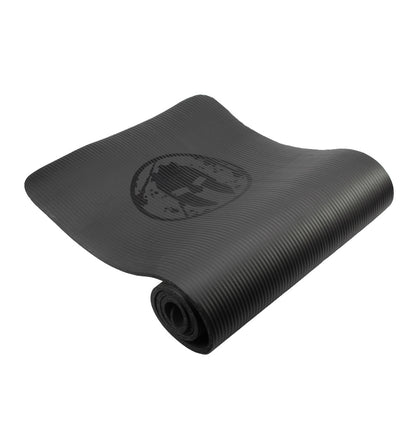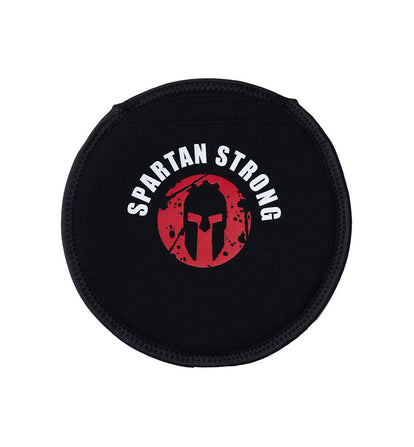Plyometric Training: Build Explosiveness for Spartan Race Obstacles

Plyometric training is essential when training for a Spartan race to increase your power and explosiveness so you can jump higher when scaling obstacles such as hurdles and walls, quickly change direction on technical terrain, and run faster when you need that extra burst of energy on the course. To really ramp up your obstacle training, you’ll want to have an entirely separate program dedicated to just plyometric training.
Key Considerations When Building a Plyometric Training Program
If you’ve committed to a Spartan race, then plyometric training will transfer over to the course. And if you’ve committed to the course itself, you’re probably not severely injured. With that said, there are still some important facts to know
about plyometric training before you get started.
1. Proper Landing Technique
Your shoulders should always be over your knees to help place the center of gravity between the body’s base of support. Your feet should be approximately shoulder width apart, with your knees in line with your feet. Be sure to land with a slight knee bend — and as softly as possible — and take extra caution not to have inward motion at the knees, as this is a common cause of knee injuries.
2. Body Size
First-time Spartans weighing more than 220 pounds should be monitored by a professional during plyometric training (at least during high-intensity exercises), due to increased joint stress. So unless you're supervised by a professional, it's best to start with low-intensity plyometrics and avoid depth jumps from a box higher than 18 inches.
Related: The 4-Move Plyometric Slam Ball Workout — and How It Benefits You
3. Age
Depth jumps, single-leg jumps, and high-intensity plyometric workouts are not recommended for prepubescent children or athletes over the age of 40 with histories of arthritis, knee surgeries, or joint degeneration.
4. Workout Surface
Hardwood floors, concrete, and tiles are not ideal for plyometric training because they don’t absorb shock well. You're better off performing plyometrics on rubber flooring, grass, or a track, as they all have better shock-absorbing properties. You can also use a mat on any surface, but keep in mind that foam that's too thick will cause you to sink too much when you land from jumps, thus losing some of that stored energy.
5. Intensity
The intensity of plyometrics can be characterized in several ways. For example, “preparatory” and most “submaximal” phases would be used in a rehabilitation setting, and the “maximal” phase would be reserved for a strength and conditioning program. Within preparatory and submaximal phases, low- and
medium-intensity exercises make up the bulk of the work, while the maximal phase includes mainly high-intensity exercises.
A work-to-rest ratio of 1:5 to 1:10 is recommended between sets of low- and medium-intensity exercises (or between reps of high-intensity exercise). So, if it takes 5 seconds to do a single-leg hop (medium), it would take 25 seconds of rest to recover.
6. Volume
Volume is typically described as foot contacts or throws in a plyometric training program, but repetitions is still a valid term to use. Aim for 40-80 foot contacts/throws when starting plyometric training, and then progress to 200 foot contacts/throws per session.
7. Program Design
If you’re running or doing other aerobic training on Monday, Wednesday, and Friday to train for a race, then try a plyometric training routine on Tuesday and Thursday or Tuesday and Saturday. If you must perform both on the same day, do plyometric training before aerobic training, and give yourself two to four days between each plyometric workout to recover.
And if you're amping up your resistance training, lift weights and perform plyometric training on Monday, Thursday, and Saturday, making sure that you alternate upper and lower body. For example, if Monday were upper-body strength training, then it would also be lower-body plyometrics. If Thursday is lower-body strength training, then you would focus on upper-body plyometrics that same day.
Related: 6 Science-Based Secrets to Building Extreme Speed and Power
And if you do target the same muscle groups for both lifting and plyometrics in the same day, make sure that one method is low intensity and one is high intensity.
Amateur athletes tend to see jump, spring, and agility results relatively quickly at just under eight weeks, whereas elite athletes typically will want to train plyometrics for more than eight weeks, according to a Journal of Human Kinetics study.
Bodyweight vs. Weighted Plyometric Training
Bodyweight Plyometric Training
When discussing plyometrics, you often hear the term "bounding," which is just an exaggerated form of running where you take strides that are as long as possible. During this exercise, your thighs should be parallel to the ground with your knees at 90 degrees, and you should have a big space to do these drills (about 30 yards).
Sample Exercises for Bodyweight Plyometrics
— Medium Intensity: Single-Leg Ankle Hop (vertical), Double-Leg Tuck Jump, Split Squat Jump, Forward and Lateral Hurdle Jumps, Continuous Double Leg Forward Jumps, Alternate Leg Bounding, Squat Box Jump, Lateral Box Jump
— Upper-Body Medium Intensity: Depth Push-Up on Medicine Ball, Clapping Push-Ups, Single-Arm Medicine Ball Throw (with a partner or against a wall or trampoline)
Related: 5 Ways to Build Muscle Without Weights
— High Intensity: Cycled Split Squat Jump, Single-Leg Tuck Jump, Single-Leg
Vertical Jump, Multiple Single-Leg Forward Hops, Depth Jump, Depth Jump to
Second Box, Depth Jump to Lateral Movement
— Upper-Body High Intensity: Medicine Ball Power Drop (with a partner), Plyometric Smith Machine Bench Press
Weighted Plyometric Training
Complex training is a combination of high-intensity weightlifting followed by plyometric training. This is akin to metabolic conditioning, where you would do power cleans or a barbell squat followed by box jumps. Weighted plyometric training is an advanced version of complex training where you add an external weight to a plyometric exercise. Using barbells, weighted vests, and sandbags, advanced athletes can make great power gains. Aim to use 30% of your one rep maximum (1RM) if using resistance during plyometric exercises.
How to Use Plyometric Training During a Spartan Race
Hurdles
Get a running start but then stop, do a quick countermovement (knee bend), and then jump up and try to place both hands on top of the wooden beam. You may be able to do a “muscle up” and just climb one leg followed by the other over the beam. If you struggle with this obstacle, once both palms are flat on the beam, hook one heel over the hurdle and straddle it between your legs so that you’re parallel to it. Then, just roll the other leg over and land on your feet.
Slip Wall
Get a running start but don’t stop once you reach the wall. Reach towards the longest rope available and keep your legs moving. You'll start to slip back as soon as you stop digging (hence the wall's name), so keep your legs moving and continue climbing your hands up the rope.
Inverted Wall
Similar to the hurdles, you’ll want a running start, then a quick planting of both feet, a knee bend, and a vertical jump. Brace your feet against the wall, push off as you try to get your chest over the wall. The "chicken wing technique" calls for you to place both armpits above the ledge of the wall once you’ve pushed off enough. This way, you’re locked in and just have throw your legs over. The "heel hook technique" calls for you to grab the top of the wall, then place the heel of one foot over the wall and straddle it slowly as you crawl the other leg over the wall.
Related: This Is the Best Way to Train, According to 5 Master Coaches
Box Jumps
During a Stadion race, you’re required to lock out both knees and hips at the top of 15 box jump reps. Practice this during your training. Don’t just jump for time: Make sure you’re doing a complete rep. Pump your arms behind you as you slightly bend your knees before the jump. Stepping off will cost you time, but is a safer method than jumping off.
Technical Terrain
Every Spartan race has relatively technical terrain, with intense climbs and descents, rocks, rivers, stairs, and more. Plyometric training will pay huge dividends when climbing stairs and mountainous ascents. More importantly, performing plyometric workouts will prepare you to descend stairs and hills faster, since your muscles will be used to the damage of eccentric landing. This is a great way to get ahead of the pack during a mountainous race, taking advantage of the ascents and descents by exploding right through them.















